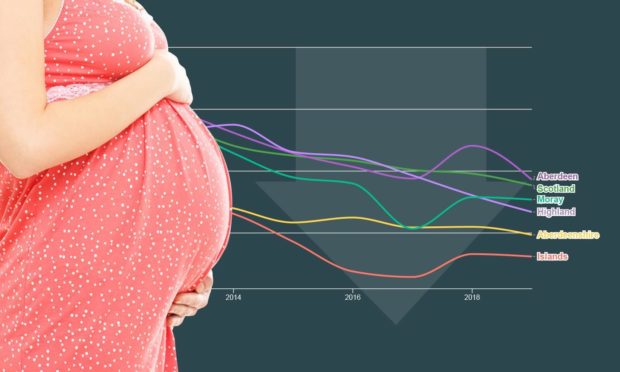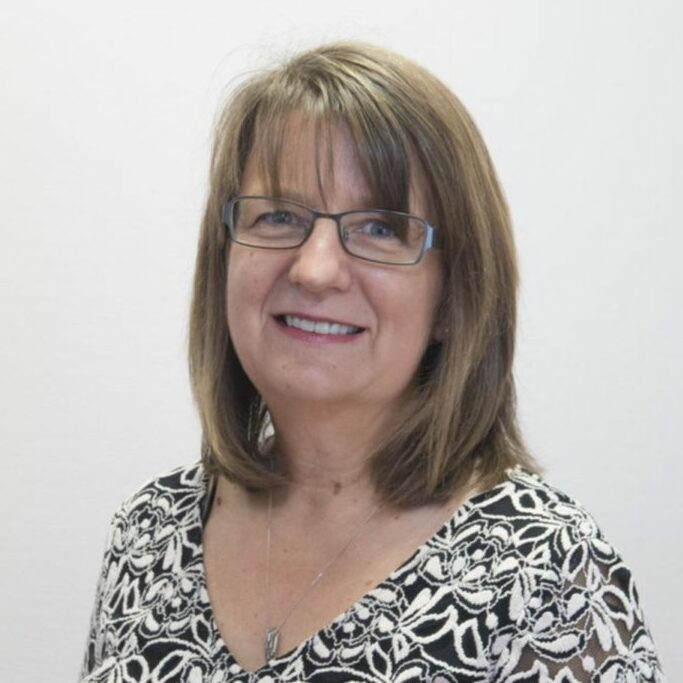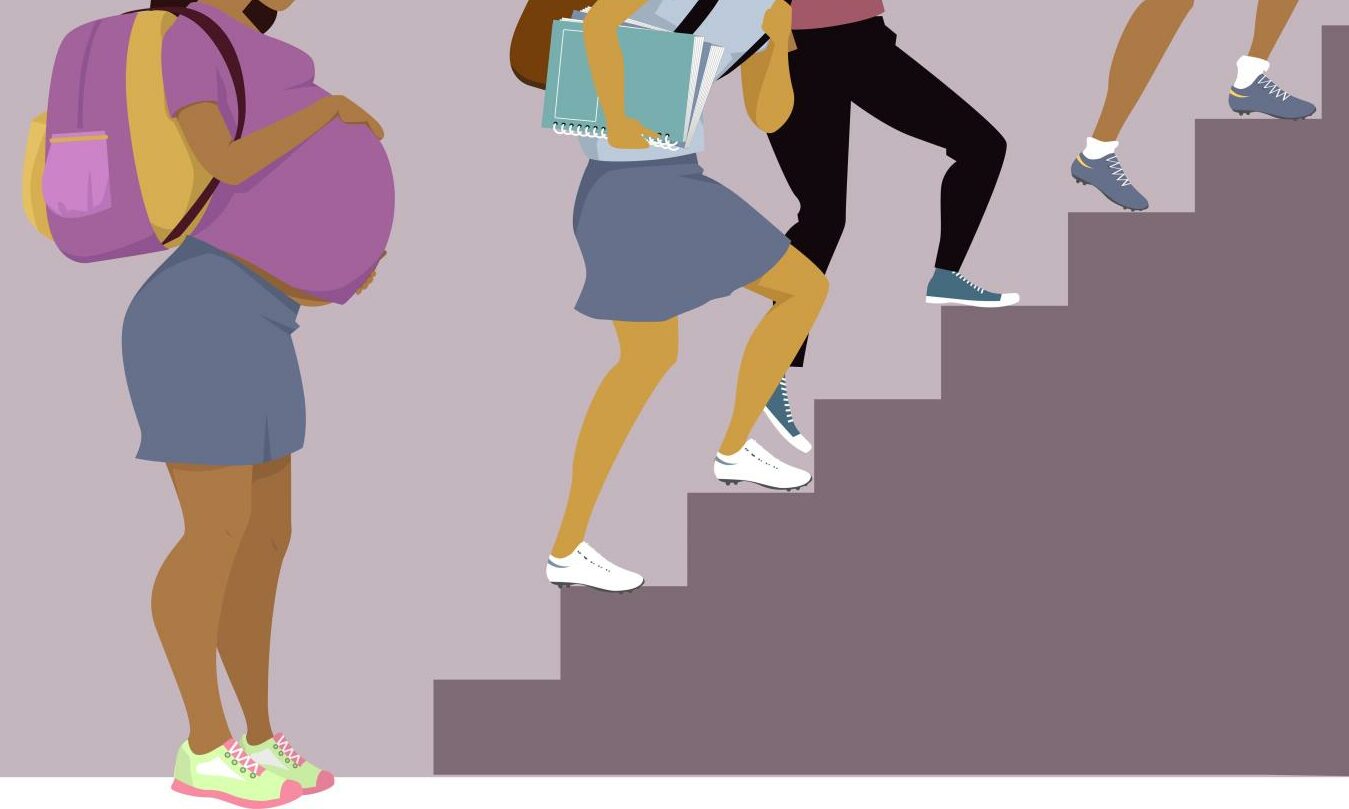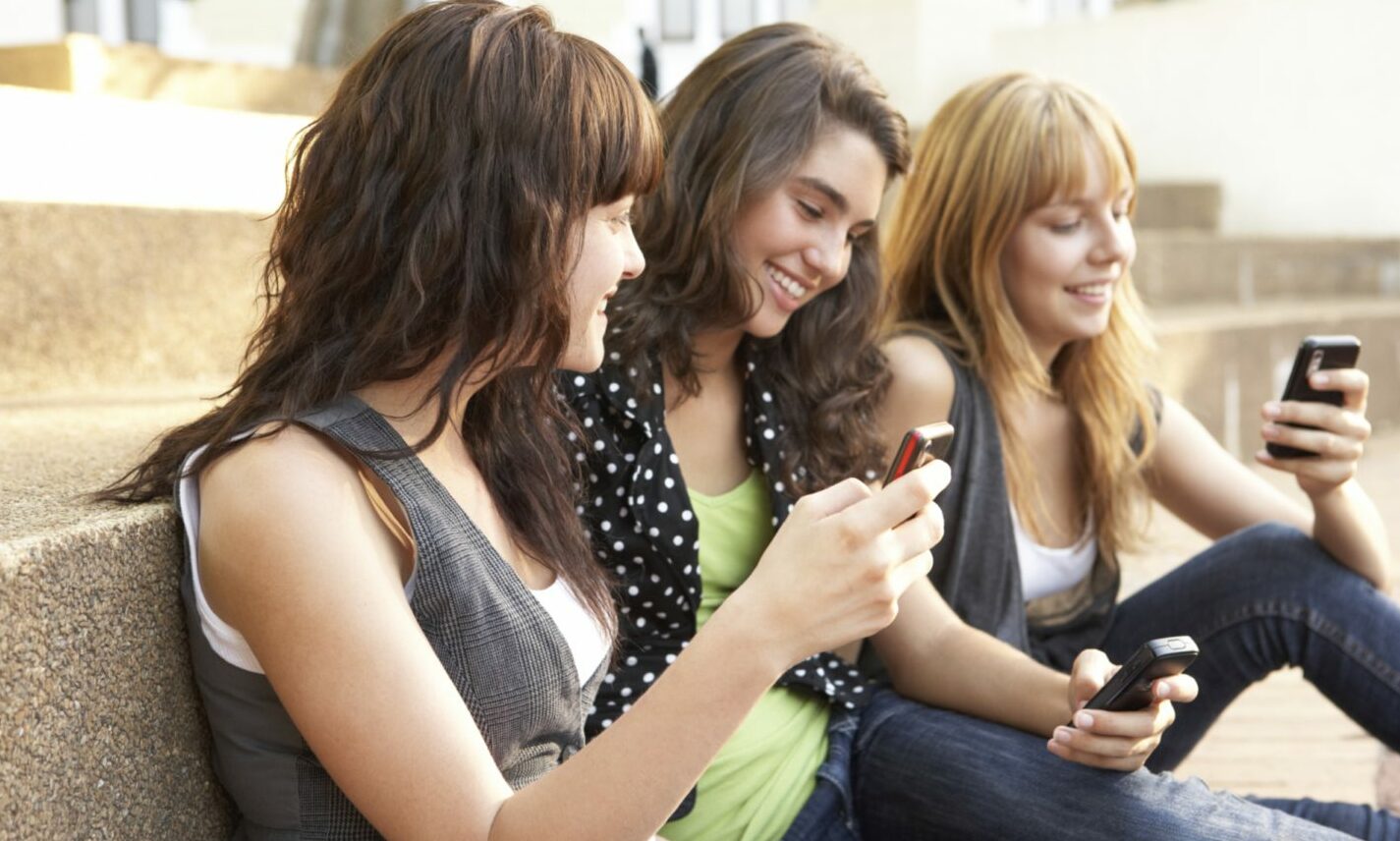Teen pregnancy rates in Scotland are at their lowest for almost 30 years – but how did we get here and why do health bosses want them to fall even further?
The latest figures show 3,814 babies were conceived by teenagers in 2019, giving birth later that year or in 2020.
This included 219 children who were under 16-years-old.
Public Health Scotland (PHS) said this amounts to a teen pregnancy rate of 27.7 per 1,000 women – almost half the level recorded in 2010 and the lowest since reporting began in 1994.
“It’s not the end of the world – but it is more difficult”
While teen pregnancy is a deliberate life choice for some, efforts are continuing to lower the number of unintended situations.
For the first time, the proportion of pregnancies which ended in termination was greater than the number of babies delivered – suggesting many had not been planned.
The Scottish Government says young mums can be at a greater risk of poverty and poor health due to the various social and economic circumstances which can arise.
Eleanor McEwan is the general manager of charity Home-Start Aberdeen, which often provides support to people in such situations.
“There’s no shame in being pregnant as a teenager,” she said. “We just need to get to a situation where it’s a choice rather than something unexpected.
“It’s not the end of the world in the same way it was in the past – but it is more difficult.
“And if you’re on your own, as a single parent, that’s hard going.”
She added: “Generally, the challenge for teenagers who are pregnant is that it can limit their options.
“It makes it really difficult for them to stay in school, or go onto college or university, or to get employment full-time if they don’t have many skills or experience.
“And often it can feel quite isolating and like they’re living a different life from their peers.
“None of their friends have babies, and the only people they know that do are older, so they can’t really relate.
“That can make them quite isolated and can cause depression and mental health problems.”
Dramatic change in Scottish teen pregnancy statistics
According to the new statistics from Public Health Scotland, Aberdeenshire and the islands are among the areas with the lowest rates in the country.
Moray and the Highlands are also below the Scottish average, with Aberdeen City slightly above it.
Clackmannanshire, Dundee and Midlothian had the highest rates.
Overall, numbers fell for the 12th consecutive year and are now less than half what they were in 2007.
An NHS Grampian spokeswoman said: “From a public health perspective, the decreasing rates of pregnancies in young people in Grampian shows us that we have and will continue to create choices for young people to plan pregnancy that work in with their own aspirations.”
The PHS figures show the proportion of teen pregnancies which result in termination is now higher than delivery – at 50.3% compared to 47.7%.
NHS Highland said this increase “suggests the need to sustain and develop work with young people to reduce pregnancy rates further still”.
Additionally, rates were four times higher in the most-deprived areas of Scotland, compared to the least.
PHS said teenage women from these parts were more likely to deliver, while those in the least-deprived areas were more likely to terminate.
Why has the teen pregnancy rate in Scotland fallen?
An increase in awareness and education – and a decrease in youngsters socialising face-to-face – have all been linked to the changing stats.
NHS Highland said greater access to “relationship-focused learning” and confidence in using contraception have been key factor, but has urged for more work in this area.
“At the same time there is a growing awareness of the pressures on young women within relationships across school and community settings and concerning levels of harassment, violence, and pressure within relationships,” a spokesman added.
“Alongside social media developments and ready access to pornography, this indicates the need for urgency in an ongoing focus on relationships in the broadest sense.”
‘Generation Sensible’
There could also be a wider cultural change at play – Public Health Scotland said: “It has been suggested that changing lifestyle factors such as reduced risk-taking behaviour and reduced alcohol consumption may have contributed to the decline.”
It highlighted the findings of a 2018 study by the British Pregnancy Advisory Service, which described today’s youngsters as “Generation Sensible”.
Katherine O’Brien, its head of media and policy research, said: “Many anticipate significant challenges in the road ahead to achieve their goals, and many are concerned that they will struggle to achieve the same level of financial stability as their parents’ generation unless they work hard at this stage in their lives.
“They enjoy spending time with their family, and place a greater importance on this than socialising with their friends.
“Many believe that sex is special and should only occur within the context of a trusting, committed relationship, and they have a negative perception of those they deem ‘promiscuous’.”
The report also highlighted that today’s teens are more likely to spend interacting online with others, rather than face-to-face.



